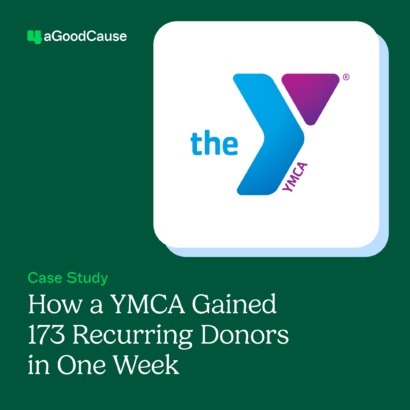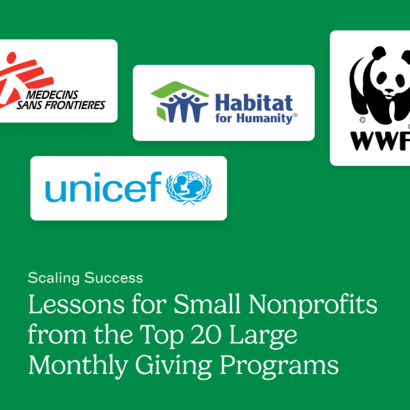Imagine you are at a vending machine. You’re starving. One small bag of pretzels isn’t going to satiate you, but your general lack of small bills and change has left you with only enough funds to buy one package. You don’t want to opt for the cheaper, less satisfying options, so you decide one is better than none and put your quarters into the machine.
Then the incredible happens. Call it a fluke, luck, or a faulty machine (likely the faulty machine, vending machines aren’t exactly synonymous with high quality), but two bags of pretzels come tumbling down behind the glass.
The world has rewarded you with double what you thought possible.
In the world of fundraising where organizations are constantly searching for new ways to raise money, matching gifts are the second bag of pretzels.
If you’re looking for creative and unique forms of fundraising, try out matching gifts.
What are employee matching gift programs?
Matching gifts are a type of corporate philanthropy program often offered by companies and corporations as an employee benefit.
When a match-eligible employee donates to a nonprofit organization or educational institution, their employer will also donate to the same nonprofit.
Though every company outlines their own matching gift guidelines, these programs always include the same elements, which we’ll break down below:
- Match ratios: This refers to the amount of money that a company will donate in relation to the amount that an employee previously donated. A 1:1 ratio means that if an employee donates $100, the company also donates $100. These ratios can be higher or lower, but the most common is certainly 1:1.
- Minimums and maximums: A program will always clarify a certain range that a donation must fall within to be eligible for a matching gift. If the minimum is $50 but the employee only donated $25, there will be no match. On the other end, if an employee donates $1,000 but the maximum is $500, the match will only go up to the maximum. An organization has just made $1,500!
- Employment status: Sometimes, a program will offer different specifications based on an employee’s level of employment. A part-time employee may be eligible for a 1:1 match, while a CEO is eligible for a 2:1 match.
- Nonprofit eligibility: Companies will sometime specify certain types of organizations that they gear their corporate philanthropy toward, including matching gifts. For example, airlines often focus their corporate philanthropy on educational organizations or institutions.
- Deadlines: There is always a specified deadline for when a matching gift request needs to be submitted by an employee to their employer.
Plenty of companies have programs in place. 65% of Fortune 500 companies offer matching gifts, as do many small and medium-sized businesses. It’s important to be aware of the matching gift programs offered by these top companies so that you don’t miss out on any matching gift opportunities!
How do matching gift programs work?
The biggest obstacle to an organization receiving a matching gift is awareness, or more accurately put, lack of awareness. Nonprofits that want the benefits of matching gifts should be doing all they can to market them.
Once a donor is aware of the opportunity and ready to follow through on the match, the process is really quite simple.
There are a few steps on the three sides involved in the transaction.
For employees:
- Make the initial donation
- Research their company’s matching gift program
- Submit the matching gift request
For Companies:
- Receive the matching gift request
- Confirm that the donation, the donor, and the nonprofit are all eligible for a match within the program’s parameters
- Send a matching donation to the organization
For nonprofits:
- Market matching gifts
- Provide confirmation of the initial donation upon request
- Receive the matching gift from the original donor’s employer
It really is such a simple process, which makes matching gift statistics even more surprising. $4-7 billion in matching gift revenue is left on the table every year. The way to change that? Marketing, marketing, marketing.
How should a nonprofit incorporate matching gifts into the donation process?
Earlier, we addressed the lack of awareness about matching gifts and how that lack of awareness impacts funding. Of course, you want to draw supporters on the web to your online donation page, and you want to draw those online donors to matching gifts.
The best place to enlighten donors about matching gifts is actually right in the online donation process. Online fundraising lends itself well to promoting matching gifts because supporters can discover the programs they are eligible for with just a few clicks of the computer mouse.
In order to incorporate matching gifts into your online donation experience, you’ll want to include them in two places:
- The donation confirmation page
- The acknowledgment email
Let’s discuss those two incorporation methods one at a time.
#1: On the Donation Confirmation Page
When marketing anything, including matching gifts, you should always put what you’re promoting (and encouraging) in a location where your audience will see and consider it. The donation confirmation page is definitely one of those places.
During the online donation process, after your donor makes a contribution, they are directed to a page that acts as an online receipt of sorts. This page is known as the confirmation page.
The confirmation page will usually begin with a message of thanks because online donors value acknowledgment just as much as the next donor. The page can also potentially include a confirmation number, any specifics on next steps, and notification that a receipt has been emailed.
Matching gift information should definitely be on that confirmation page. For example, here is the confirmation page for the Girl Scouts of Northeast Texas.
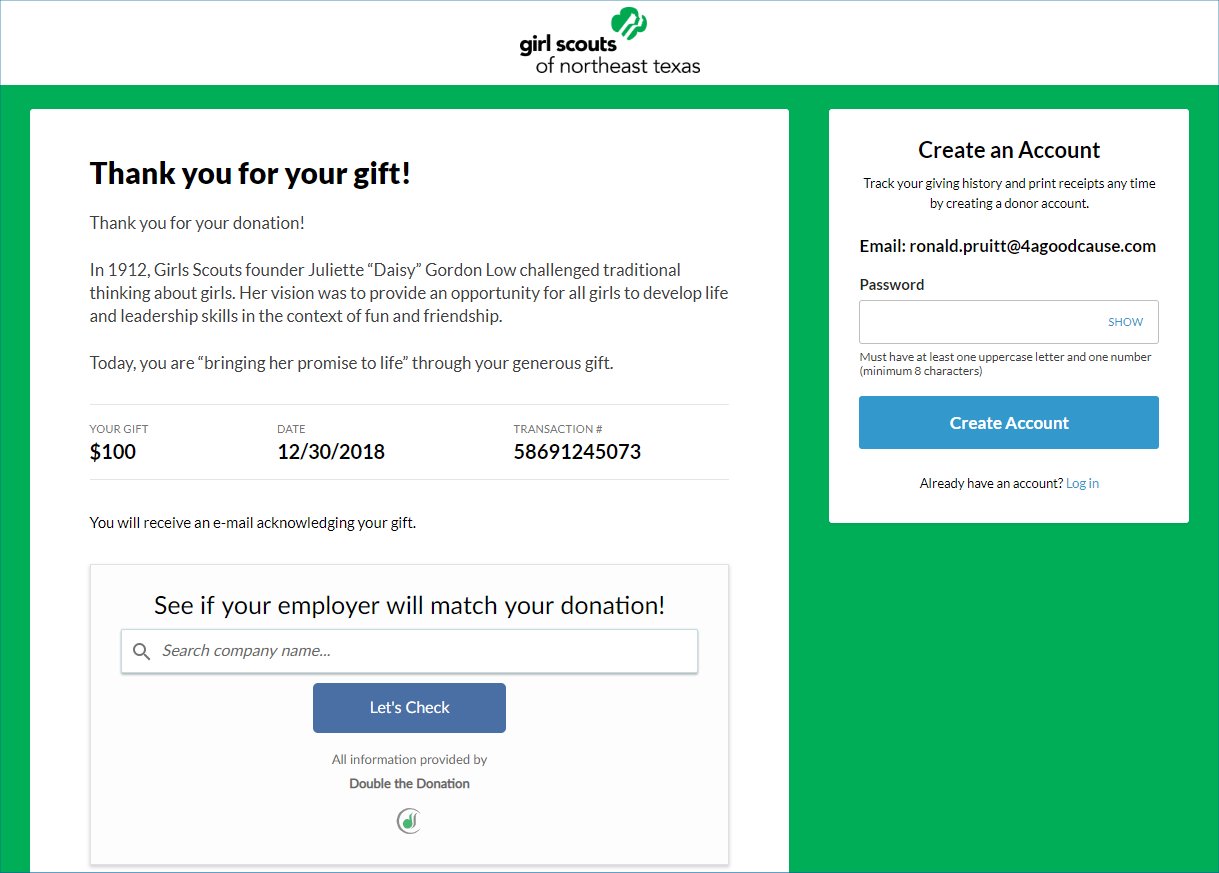
After the general copy of the confirmation page handling the specifics of the donation, Cure Kids Cancer includes a matching gift search tool for donors to use. With this plug-in, a donor can easily type in their company name and determine if that employer provides matching gifts.
This option makes life easy for donors. The easier a process is, the more likely that donors will be willing to do it.
If you’re looking for products to revolutionize your matching gift revenue, 4aGoodCause integrates seamlessly with Double the Donation!
#2 Within the Acknowledgment Email
In addition to using the confirmation page to promote matching gifts, an organization can also spotlight matching gifts in the acknowledgment email that is sent after a donation is made.
Here’s a sample acknowledgment email from the Hereditary Neuropathy Foundation:
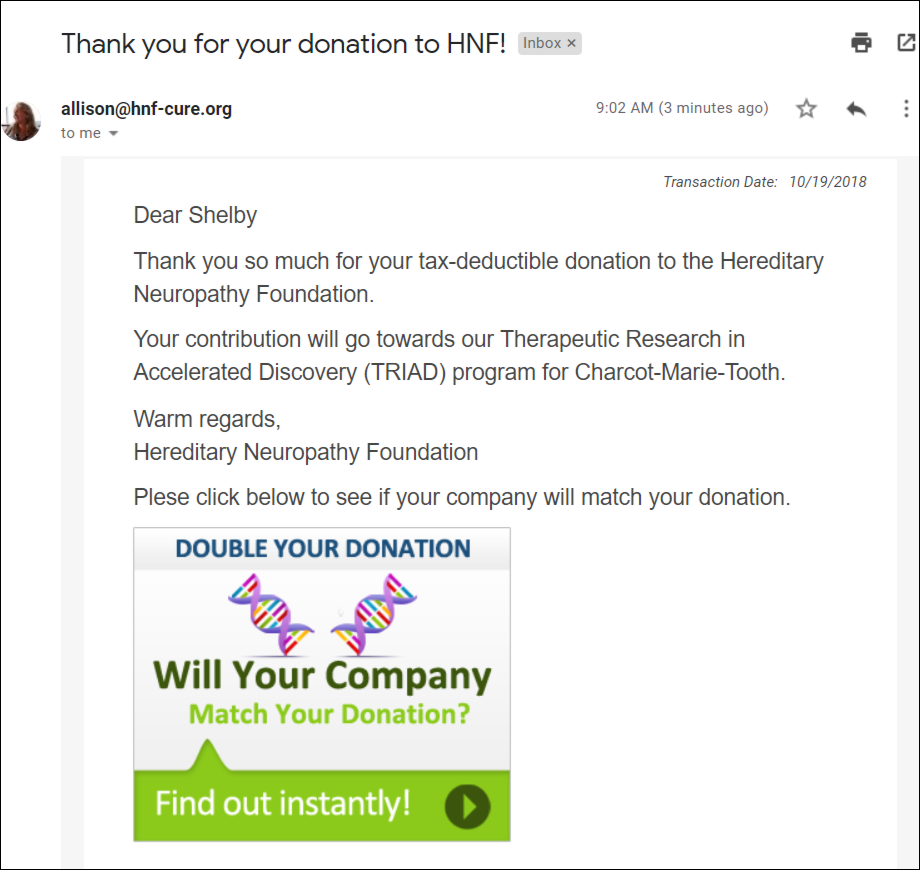
The design of the acknowledgment email is much the same as the confirmation page.
In the email from HNF, the visual graphic actually works as a link that takes donors to the organization’s dedicated matching gift program. That dedicated matching gift page should give donors a sense of what matching gifts are, an understanding of how the process works, and provide the tools to discover if their companies offer a matching gift program.
Here’s a sample dedicated matching gift page from the ASPCA, which they link to from their “Ways to Give” page.
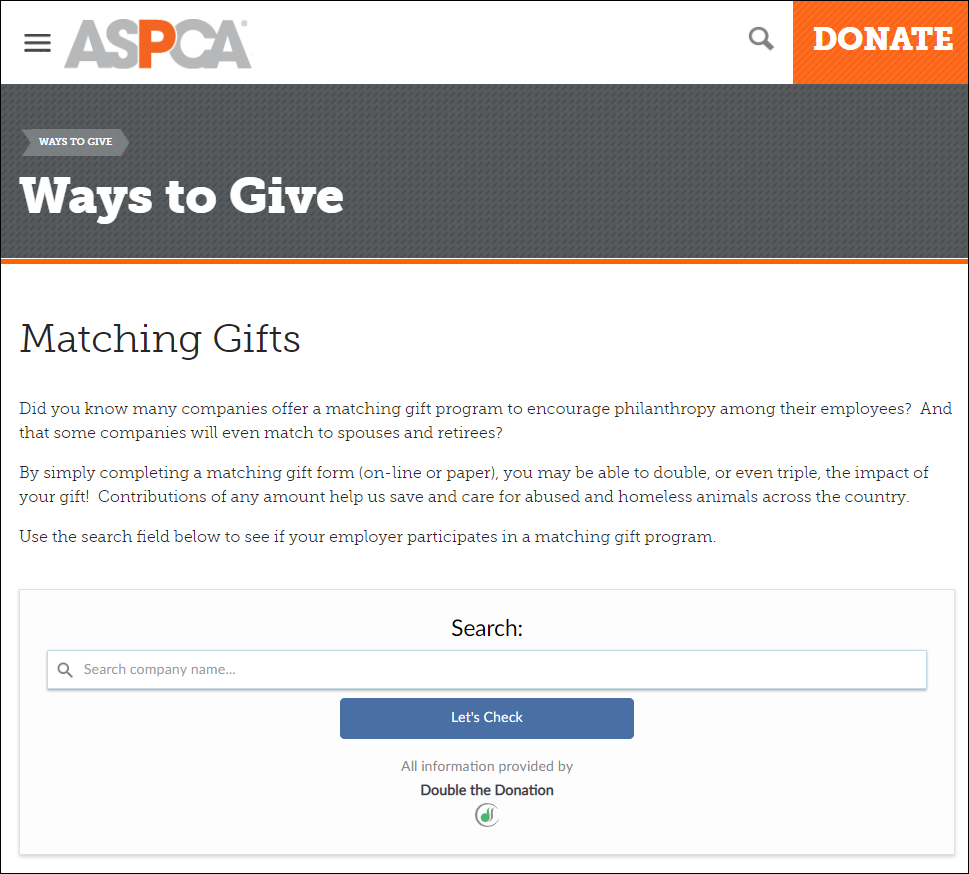
Learn about your donors and start to recognize which of your prospects are candidates for matching gifts. Performing a prospect screening can illuminate significant matching gift details that are often overlooked, like eligible spouses or dependents.
Because there isn’t enough time in the day to investigate the potential of the matching gift for each and every donor, marketing matching gifts should be a top priority. All you have to do is lead your donors to water, and they’ll drink.
Don’t forget about promotional activities outside of the donation process, like including a blurb about matching gifts in your newsletters or a line about matching gifts in your email signature.
Now that you are an expert in matching gifts, get out there and spread the word to all your donors! Once they know, you’ll have too many extra pretzel bags to count.
Next Steps
Want a well-designed donation form that converts visitors into donors? Get in touch with 4aGoodCause.
Want to learn more about Double the Donation’s matching gift tools? View a demo of Double the Donation’s service.
Already a 4aGoodCause client? Learn how to add matching gifts to your online donation process.


